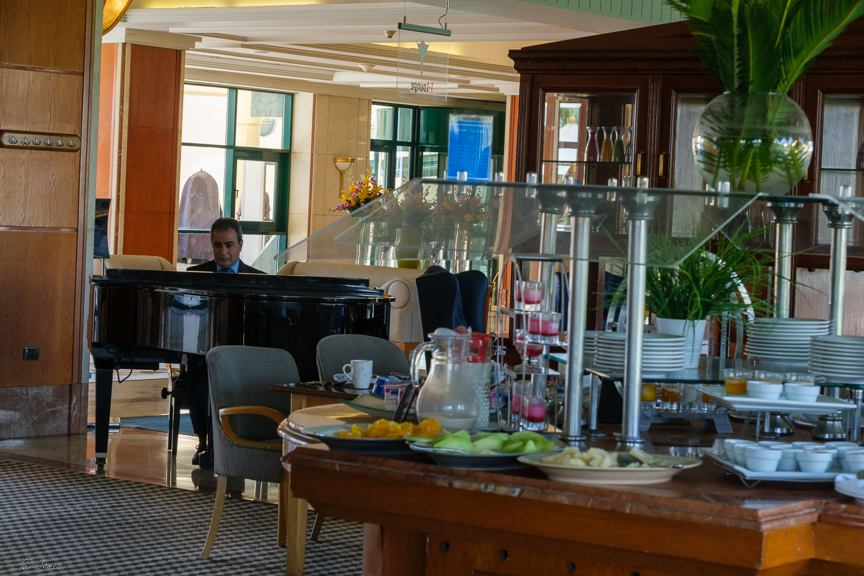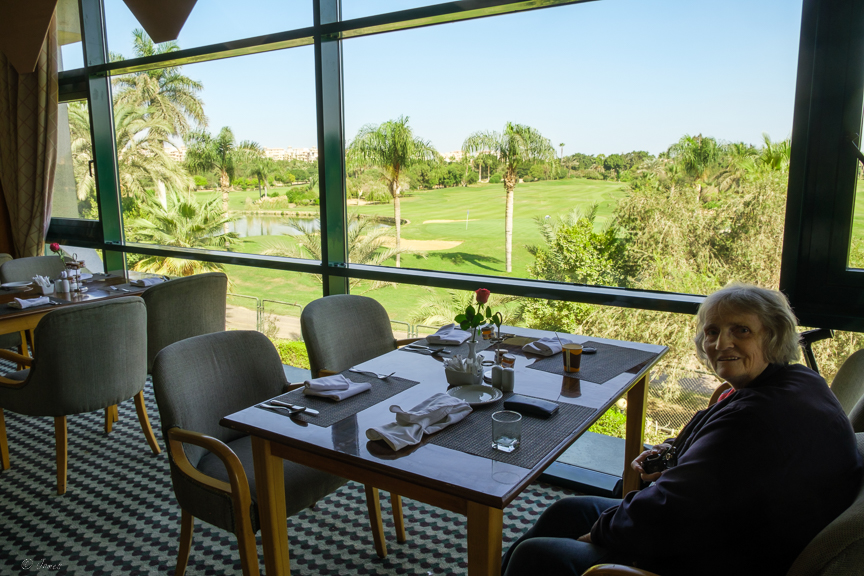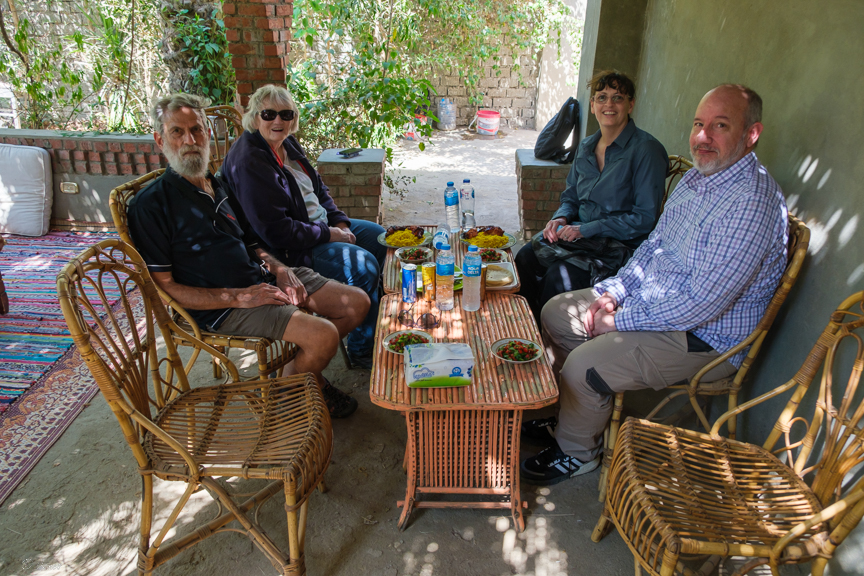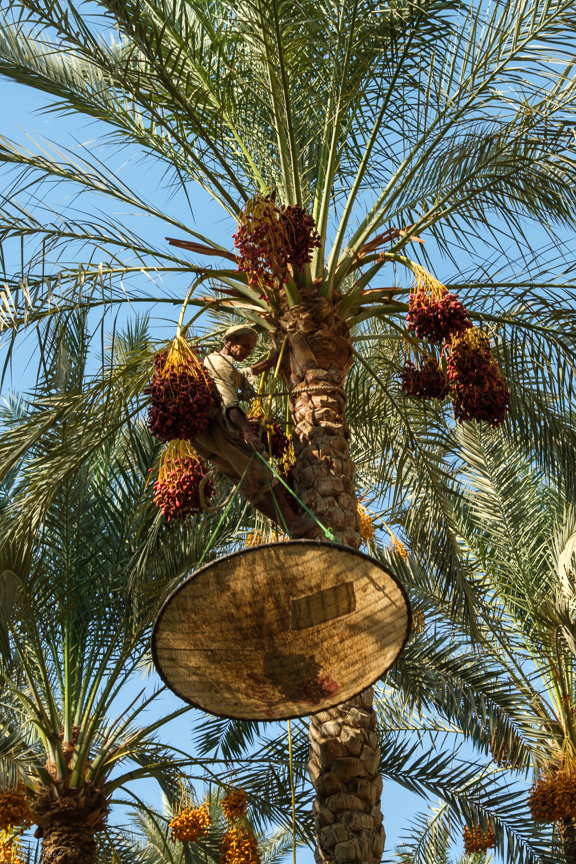The hotel in ‘5th October’ is west of the city, one of 5 ‘suburbs’ making up Greater Cairo (28M), separated by the Nile and a stretch of desert, preserved in case of undiscovered archaeological finds – even this highway(!) is bridged several km.
Speeds are kept low by frequent sharp humps. The place is over run by the mostly bored army and cops, sitting in cars and utes, where shade can be found. One sat in his car shaded by an umbrella. The roads vary in width and surface; 7 lanes to 2-car spaces. No particular rules, often no lane lines, cars, motor cycles 5-up (yes 5), tuk-tuks for people, some with trays for goods, weave in and out, mixing with donkey carts, men riding donkeys, sometimes sheep. Pedestrians crossing dodge through. Leaving the city, the run-down buildings become sporadic, interspersed with patches of cultivated gardens, date palms, occasional grape vines and plastic greenhouses. The latter become large swathes of neatly planted palms, the red and black dates hanging in huge bunches high at the crown. This is all watered by channels from the Nile or pumped from wells on this flat river plain. The scene is spoilt by a great deal of rubbish lining the road, in the channel waterways, everywhere, so much that cleaning up seems impossible.
We branched off the main road onto a dirt track rising from the plain into the desert, shared by three government sections, who cannot determine who should pay for the upgrade, to see three pyramids – black, red, and bent. The narrow road improved leading to the latter two parking areas – we drove to Sneferu’s Bent Pyramid, 2600 BC. He built more pyramids than any other, the red also being his. later his son Khufu, built the largest at Giza.
He requested a pyramid with smooth sides as opposed to the earlier Step-pyramid. The architect’s plan was faulty, so partway up he discovered that the angle would lead to a very steep, high unstable construction, so he flattened the sides.
We walked across the desert sand and wind-varnished pebbles, dodging some of the broken limestone fallen from the pyramid. Climbed the 40m timber stairs to the entry where we could look down the lit narrow passage leading to the burial chambers. Peigi and Jason went down, returning very cramped, while I sat on the platform at the entrance, contemplating the vast plain reaching to tree more pyramids in the distance. The Black pyramid has mostly collapsed. We stopped to pose at the Red pyramid the third largest after Khufu and Khafre, and the last of his pyramids and the first true pyramid. The name red is due to the red limestone used to build it also originally cased in a white limestone plundered by Muslims in the Middle Ages to build Cairo and continued back, turning on the river plain into the date forest inhabited by the many farmers, living as a community each on one acre marked only by short steel posts. Lunch was on the small porch at one of the small buildings, overlooking the small yard hedged by a fence of dry reeds. The chicken and spiced condiments on 3-tiers were cooking in a drum set into the ground, smelling wonderful. We were not disappointed – delicious, and plenty. The main was followed by a dish of yellow and black dates; I found the yellow ones sweet and soft unlike that in Australia.
We were transported on tuk-tuks along tracks edged by channels, further into the plantation, past rude and posh buildings, donkeys, kids, and sheep. We walked a short distance with the owner; the palms providing a light shade to a ‘mess’ of plants which we discovered were all valued. Banana plants, delicious dates, mangos, oranges, green beans, potatoes, cabbage, sweet potato, chilli, beans, eggplant, pumpkin, lavender, lemongrass, lemon, papaya, mint, hibiscus, jasmine, basil, even a bee hive…..a true Permaculture. The homes are mostly utility, but the community life makes up for it.
We returned to the hotel, hot and tired, avoiding a dinner, choosing room service for cream of chicken soup and apple pie.




















That plantation was great. Hard to imagine produce growing in near desert conditions